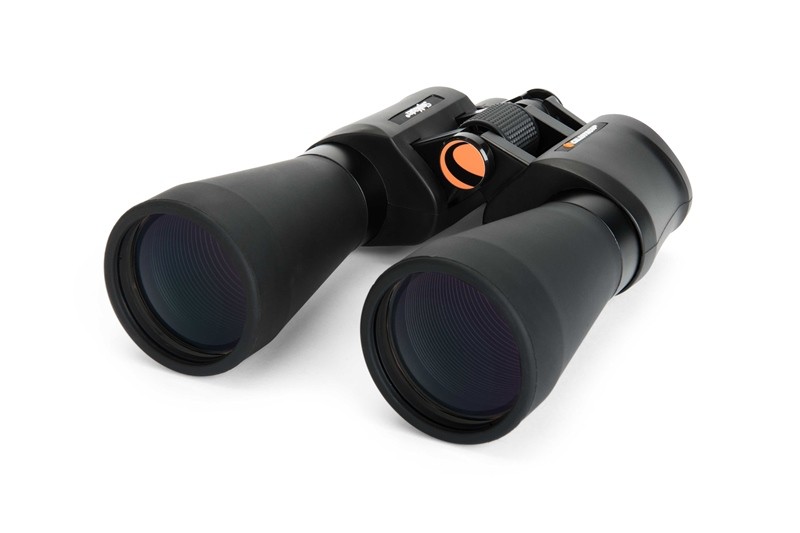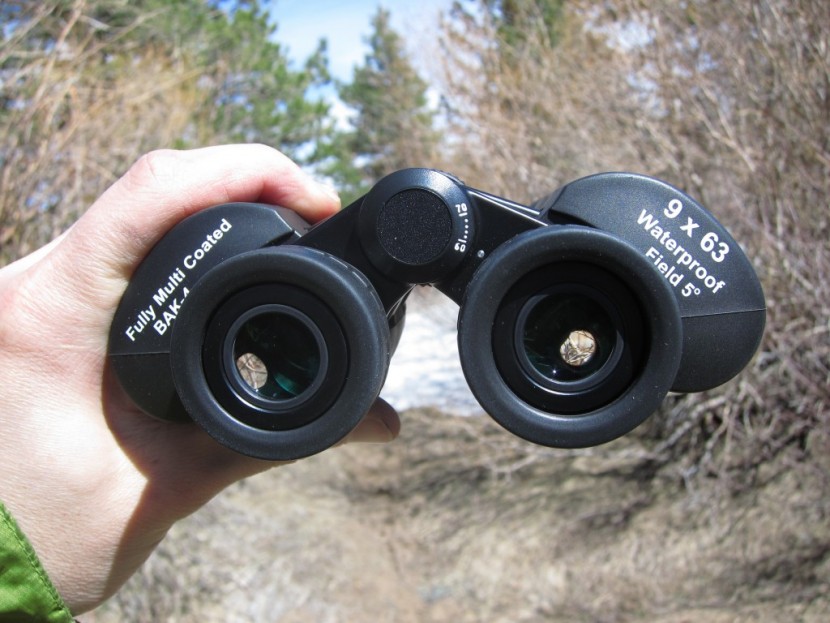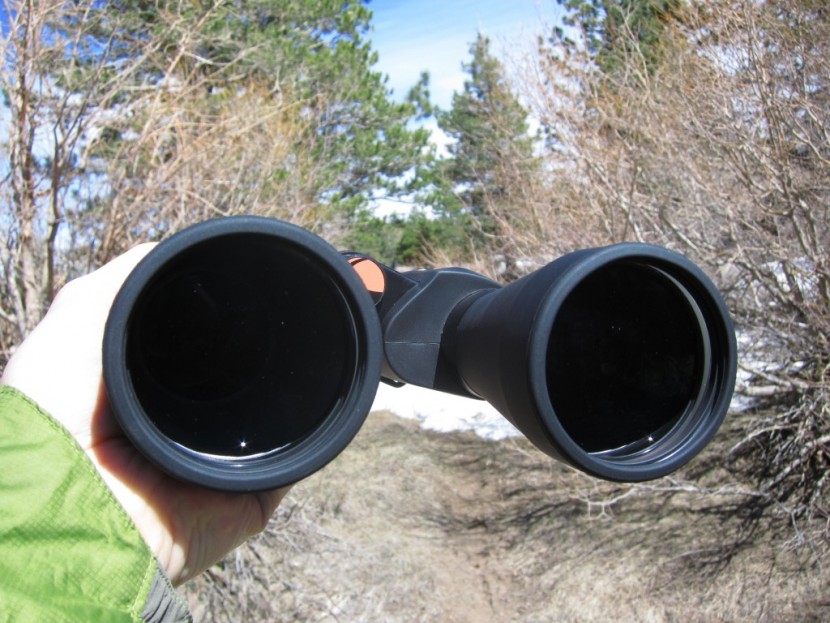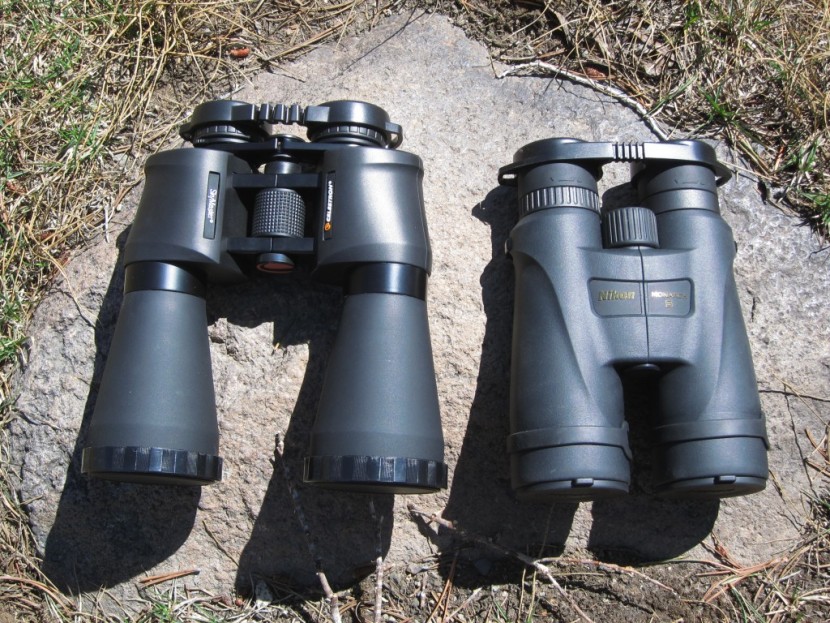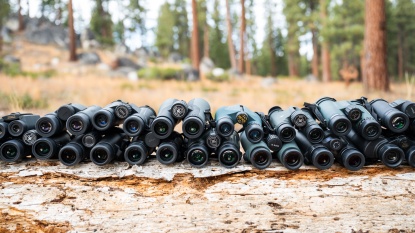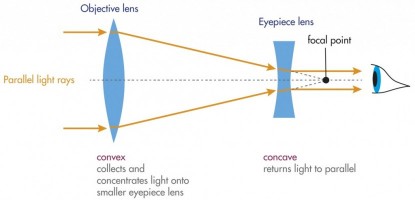Celestron SkyMaster DX 9x63 Review
Our Verdict
Our Analysis and Test Results
The Celestron SkyMaster is a great pair of astronomy binoculars, and works well in low light situations. As the only porro prism pair in our test, they are larger and heavier than the others but easy to grip. If you're looking for a binocular that does it all and wins our overall Editors' Choice award, consider the Vortex Viper HD 8x42.
Clarity
The lack of close focusing (35 foot minimum) made these binoculars hard to test against the ISO 12233 chart. The chart was clear up to zone 4, but this could be more because we were inside the 35 foot minimum that Celestron gives for focusing. The edges are sharp when outside and we didn't notice any color deviations or color abbreviations. Ultimately we gave this pair a lower clarity score in comparison to others.
Brightness
The large 63mm objective lens and 7mm exit pupil allow for a lot of light to be gathered by these binoculars. The Celestron SkyMaster has multi-coated optic and BaK4 prisms to help transmit the light through the system. This allows the Celestron SkyMaster 9x63 to be one of our top scorers in the brightness category and gives them excellent low light performance.
Ease of Adjustment
The central focusing knob is easy to access and moves easily while focusing. The focusing is fast, which can make fine focusing difficult. We never had this issue during our testing, but we used this pair more for long distance viewing, which can mask any issue. The diopter is located on the right eyepiece and is easy to use but did not have a locking mechanism.
Field of View and Close Focus Range
The Celestron SkyMaster DX 9x63 scored low in both close focusing range and field of view, having the furthest focusing point of any binocular and the smallest field of view. Seeing as Celestron describes these binoculars as being best used over long distances, it would seem that these specifications were not a high priority in the design of the SkyMaster based on the intended use.
Comfort
The porro prism design makes for a comfortable platform to hold. It also makes this pair big and heavy. The overall large size of the Celestron SkyMaster and the rubberized coating on the barrels makes them easy to hold. We had no problems holding on to them on a cold fall night will looking at the stars for several hours.
Construction Quality
The construction quality appears good on this product. All the glass lined up, we didn't notice any misalignments. All the parts rotated smoothly and didn't catch. We didn't notice any flaws in the glass. The porro prism design does have more possible failure points than a roof prism design, but does allow for a lower cost manufacturing. With the external moving parts, we just don't fully trust the waterproofness of the SkyMaster. The biggest issue we had with them was that the protective caps come off way too easily, which can be an issue on a dark starlight night.
Best Application
These binoculars are best used for low light situations and where you aren't wandering far from a car or house. They would make a great pair of astronomy binoculars or to stash in your car or boat.
Value
These are a great deal for the amount of glass they contain. The construction quality is good but the porro prism design does have more potential failure points than a roof prism binocular, but it is cheaper to produce. Celestron does back these binocular up with a limited lifetime warranty. Our Best Buy award winning choice, the Vortex Diamondback 8x28, offer great clarity and comfort.
Conclusion
These were our tester's go-to pair for car camping and road trips during the test period. We would grab them for a quick walk down to the park to see what was out in the sky. The size, weight, and design precluded them from accompanying anyone on any backcountry trips. Through the SkyMaster DX 9x63 scored towards the lower end of the test field, they are also at the lower end of the price range. This is not a one trick pony pair of binoculars, but it does have a more limited range of use.


